- CROOKED CROSS
- See ‘swastika’.
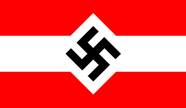
Flag of the Hitler Youth 1933–1945, Germany
- CROSS
- 1) Two stripes or bands of equal width (and in the same colour) but of unequal
length, that extend to the outer edges of the flag, canton or panel they
occupy, and intersect at right angles in the exact centre of that flag, canton
or panel – a St George-type cross, a cross fixed, cross throughout, an upright centred,
centred, regular or (inaccurately) a square cross – see square cross 1) (also
St George’s Cross).
- 2) A charge, which may or may not reach the outer edges of the shield, flag, canton
or panel it occupies, and which may not have straight edges but which has four segments
meeting at right angles at a central point – but see note below.
- 3) A generic name for two stripes of the same colour (although two/three
colour variants exist see cross counterchanged
plus cross gyronny, tripartite and
layered cross) and any width, crossing
the field of a flag, panel or canton in any manner (see also
saltire
and Scandinavian cross).
![[cross]](../images/v/vxt-d4091.gif)
![[cross]](../images/v/vxt-d4092.gif)
![[Pisa, Italy]](../images/v/vxt-d104b.gif)
![[cross]](../images/v/vxt-d4093.gif)
Flag of Savoy, France;
National Flag of Switzerland;
Flag of Pisa, Italy;
State Flag/Naval Ensign of Denmark.
Please note however, that whilst
several of the types
used on flags are detailed separately herein – the cross throughout as given in
1) above, the Greek cross, the
Celtic cross, the
Scandinavian cross, the
saltire (or diagonal cross),
Cross of Lorraine,
the swastika,
and the Maltese cross – numerous other
variants exist (mostly used in heraldry but which also sometimes appear on flags),
and the majority of these are listed below.
- CROSS ANCHORY
- An alternative heraldic term for a cross moline – see ‘cross moline’.
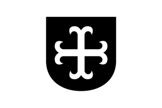
Flag of Wezembeek-Oppem, Belgium
- CROSS ANNULETTY
- The heraldic term covering a sun cross – see ‘sun cross’ and its following note.
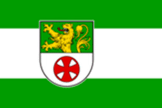
Flag of Otze, Germany
- CROSS BAR (CROSS-BAR or CROSSBAR)
- The transverse rod, from which a flag is suspended, either attached in the centre or
from one end, or hung by cords from a vertical pole or poles (see also
‘banner 2)’, ‘banner 3)’,
‘frame 1)’, ‘frame 2)’,
‘framed flag’,
‘gonfalon’
and ‘vexillum’).
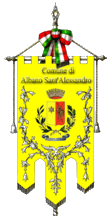
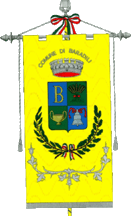
Gonfalon of Albano Sant'Alessandro, Italy; Gonfalon of
Baradili, Italy
- CROSS BARBED
- The heraldic term for an arrow cross – see ‘arrow cross’.
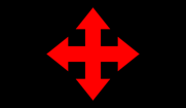
Former Flag of the
Falange Venezolana, Venezuela
- CROSS BOTONNY (BOTTONNY or BOTTONÉE)
- The alternative heraldic terms for a cross that does not usually extend to the edges of a shield, flag, canton or panel, but whose ends
each are formed by three discs – a trefoil or treflee
cross – but see note below (also ‘cross 2)’, ‘disc’ and
‘trefoil’).
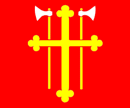

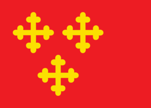
Flag of the Church of Norway; Arms of Negoslavci,
Croatia; Flag of Vestby, Norway
Please note that this phrase is often seen spelt as "cross bottony", and whilst perfectly
understandable, this version remains unsupported by definitive heraldic sources.
- CROSS CALVARY
- The heraldic term for a cross of calvary – see cross of calvary 1).
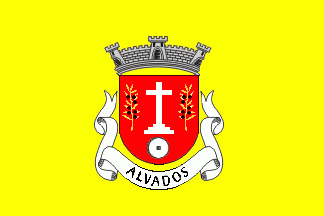
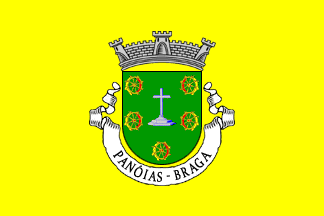
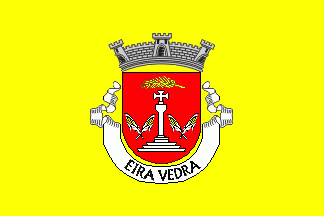
Flag of Alvados, Portugal; Flag of Panóias,
Portugal; Flag of Eira Vedra, Portugal
- CROSS-CANTONÉE (or CANTONED)
- The alternative heraldic terms for a cross which may or may not extend to the edges of a shield,
flag, canton or panel, but which has four further crosses (or other charges) arranged around it – a
cross cantoned (see also ‘canton 3)’,
‘cantoned 1)’,
‘cross 1)’,
‘cross pattée’, and
‘cross potent’ and
‘cross potent cantonée’).

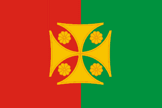
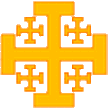
Example;
Flag of Tianeti, Georgia;
Arms of The Kingdom of Jerusalem c1200 (CS)
Please note as may be seen in the illustrations above, various types of cross can be used to make up a cross cantonée, and that a Jerusalem Cross (a cross-potent cantonée constructed of a cross-potent and four Greek crosses or of five crosses-potent) is one specific type.
- CROSS-CELTIC
- The heraldic term for a Celtic cross – see ‘Celtic cross’
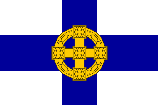
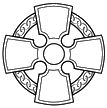
Flag and Logo of the
Church in Wales, UK
- CROSS-CLECHÉE
- The heraldic term for a cross that does not generally extend to the edges of a shield, flag, panel
or flag, but whose arms are in the form of (usually irregular) lozenges or fusils – a cross-lozengy
or cross-fusilly (see also cross
2),
cross of Pisa, fusil, lozenge
and occitan cross).

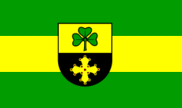
Arms and Flag of
Woltwiesche, Germany
- CROSS-COUNTERCHANGED
- The heraldic term for a cross that generally extends to the edges of a shield, panel, banner of arms or
flag, and which is divided along its horizontal and vertical centre-line with the tinctures of the field
and cross usually (but not exclusively) alternating in adjacent quarters – a counterchanged cross or
cross counter-quartered – but compare with
cross gyronny [☞ not to be confused with!] (see also
counterchanged,
cross 2),
Dominican cross,
quarter 2) and
tincture).
![[cross-counterchanged]](../images/v/vxt-d1831a.gif)
![[cross-counterchanged]](../images/v/vxt-d1832.gif)
![[cross-counterchanged]](../images/v/vxt-d5199.gif)
Flag of Zaprešić, Croatia;
Flag of Flag of Davos commune, Switzerland;
Flag of Weddingen Borough, Germany
Please note that a cross that is divided only along either its horizontal or vertical centre-line is
properly blazoned using a full description – for example, "party per fess argent and azure a cross-humetty
counterchanged" as shown below.
![[cross-counterchanged]](../images/v/vxt-d3136.gif)
Flag of Zurrieq, Malta
- CROSS COUNTER-QUARTERED
- 1) See ‘cross counterchanged’.
2) The term that may also be used when the centre of a cross of this general type is obscured as
illustrated below – see ‘cross gyronny’.
![[cross-counterquartered]](../images/v/vxt-d1877b.gif)
![[cross-counterquartered]](../images/v/vxt-d1877a.gif)
![[cross-counterquartered]](../images/v/vxt-d3134.gif)
Flag and Arms of Tursko, Czechia ;
Flag of Palomares del Río, Spain
- CROSS-COUPED
- A heraldic term sometimes used when a cross (either plain or decorated) does not extend to edges of a shield, banner of arms or flag (see also
‘couped 2)’ and
‘Greek cross’).
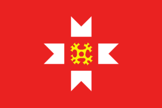
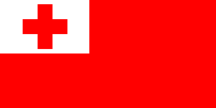
![[Pisa, Italy]](../images/v/vxt-d104b.gif)
Flag of Mozhginsky District, Russia;
National Flag of Tonga; Flag of Pisa,
Italy
"Cross of Pisa couped" as illustrated above, or a "cross crosslet couped"
as shown in the following definition.
- CROSS CROSSLET
- The heraldic term for a cross which does not usually extend to the edges of a shield, flag canton or panel, but whose arms have a short transverse bar inserted (see also ‘cross 2)’).
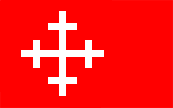
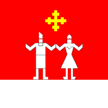
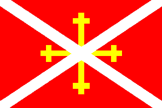
Flag of Dobrzyca, Poland;
Flag of Costuleni, Moldova;
Flag of Echt, The Netherlands
- CROSS ENGRAILED
- In heraldry see ‘engrailed’.

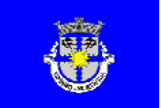
Arms and Flag of Espinho, Portugal
- CROSS EQUIPOLLÉ (or EQUIPOLLÉE)
- In heraldry see ‘equipollé’.

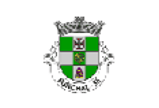
Arms and Flag of Sé, Portugal
Introduction | Table of Contents
| Index of Terms | Previous Page | Next Page

![[cross]](../images/v/vxt-d4091.gif)
![[cross]](../images/v/vxt-d4092.gif)
![[Pisa, Italy]](../images/v/vxt-d104b.gif)
![[cross]](../images/v/vxt-d4093.gif)


















![[cross-counterchanged]](../images/v/vxt-d1831a.gif)
![[cross-counterchanged]](../images/v/vxt-d1832.gif)
![[cross-counterchanged]](../images/v/vxt-d5199.gif)
![[cross-counterchanged]](../images/v/vxt-d3136.gif)
![[cross-counterquartered]](../images/v/vxt-d1877b.gif)
![[cross-counterquartered]](../images/v/vxt-d1877a.gif)
![[cross-counterquartered]](../images/v/vxt-d3134.gif)


![[Pisa, Italy]](../images/v/vxt-d104b.gif)







